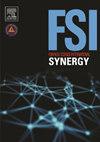Barriers to human remains identification using forensic odontology in resource-constrained settings
Q1 Social Sciences
引用次数: 0
Abstract
An effective strategy for human remains identification with a high success rate and low cost is vital for low to low-middle-income countries. Prompt identification of human remains is essential for the swift recovery of families and communities affected by large-scale disasters. However, the systematic integration of forensic disciplines into standard practice remains to be implemented in many areas. Even countries like the Philippines – where over 20 typhoons occur annually, leaving numerous, even thousands of persons remain missing so many years after the disaster, institutions continue to struggle in adopting standard protocols for human remains identification (HRI). This paper examines the barriers to implementing such protocols and explores the feasibility of maximizing the use of forensic odontology in the identification process in resource-constrained settings. The discussion highlights the situation in the Philippines resulting from these barriers and provides actionable plans for overcoming these challenges. In doing this, we can maximize the use of available technologies such as forensic odontology when local resources are limited, trained professionals are scarce and a sustainable and efficient operational local framework to handle mass fatality incidents (MFI) is not in place.
在资源有限的情况下,利用法医牙科学鉴定人类遗骸的障碍
一个成功率高、成本低的遗骸鉴定策略对中低收入国家至关重要。迅速识别人类遗骸对于受大规模灾害影响的家庭和社区的迅速恢复至关重要。然而,在许多领域,将法医学科系统地纳入标准实践仍有待实施。即使像菲律宾这样每年发生20多次台风的国家,在灾难发生多年后仍有无数甚至数千人失踪,各机构仍在努力采用人体遗骸鉴定(HRI)的标准规程。本文探讨了实施此类协议的障碍,并探讨了在资源有限的情况下,在鉴定过程中最大限度地利用法医牙科学的可行性。讨论强调了这些障碍造成的菲律宾局势,并为克服这些挑战提供了可行的计划。这样,在当地资源有限、训练有素的专业人员稀缺以及处理大规模死亡事件(MFI)的可持续和有效的地方运作框架不到位的情况下,我们可以最大限度地利用法医牙科学等现有技术。
本文章由计算机程序翻译,如有差异,请以英文原文为准。
求助全文
约1分钟内获得全文
求助全文
来源期刊

Forensic Science International: Synergy
Social Sciences-Law
CiteScore
4.90
自引率
0.00%
发文量
75
审稿时长
90 days
 求助内容:
求助内容: 应助结果提醒方式:
应助结果提醒方式:


